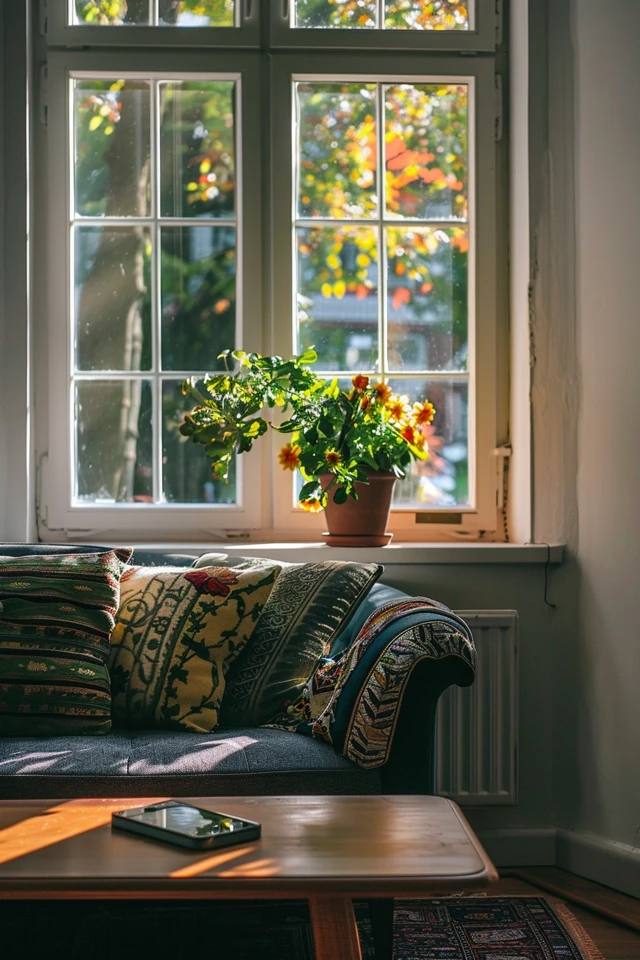I have always been amazed at how a well-tiled window can transform the look of a room. But I also know that tiling around windows can be a challenging task, especially when it comes to creating a seamless transition between the tile and the window frame. If you’re a DIY enthusiast like me, you’ve probably faced this dilemma before. But worry not, because in this article, I will share with you some valuable tips and techniques to help you achieve the perfect tiling around windows.
One common issue that DIYers encounter is the junction of the reveal with the sill. It’s essential to understand how to achieve the desired effect for this area. One approach is to use butt joints, but it can be tricky to visualize how they would work. To create a clean and professional finish, it’s recommended to have the edge of the tile covered by the wall tile for the reveals, while the sill tile should overlap the wall tile. This creates a neat and seamless transition between the window and the surrounding wall.
Another aspect to consider is tiling the top of the window to match the reveals. This helps maintain consistency and enhances the overall appearance of the window. It’s crucial to pay attention to the conjunction of the reveal with the sill and explore different techniques to achieve the desired effect. Seeking advice and comments from experienced DIYers can also provide valuable insights and ensure a successful tiling project.
Key Takeaways:
- Use butt joints for a clean and professional finish when tiling around windows.
- Ensure the edge of the tile is covered by the wall tile for the reveals.
- Overlapping the sill tile with the wall tile creates a seamless transition.
- Tiling the top of the window helps maintain consistency and enhances the overall appearance.
- Seek advice from experienced DIYers to ensure a successful tiling project.

Exploring Tiling Techniques for Windows
When it comes to managing multiple windows or larger screens, traditional windowing systems can often become messy and overwhelming. Thankfully, there are tiling window managers that can help solve the problem of hidden windows by preventing overlapping. These tiling techniques provide a more organized and efficient way to navigate and work with multiple windows.
However, it’s important to note that tiling window managers have their limitations and may not be suitable for all situations. One of the challenges is sizing windows according to the available screen space, which may not align with the ideal size of an app designed for a specific aspect ratio. Another issue is the arbitrary placement of new windows, which often requires manual adjustments for optimal positioning.
Despite these challenges, designers and developers have been exploring different tiling techniques and window management concepts to improve the user experience. For example, purposeful tiling window managers used in iPadOS offer a scalable solution that works well on smaller screens, but they may not be as effective on larger screens.
In the pursuit of better window management, design teams have been experimenting with a new concept in GNOME Shell. This concept includes a mosaic window management mode, edge tiling, and traditional floating windows. The focus is on automatically doing what users want, leveraging workspaces as an integral part of the workflow, and incorporating richer metadata from apps for better integration.

I believe that this new window management concept has the potential to solve many common problems faced by users. It introduces more flexibility and control while maintaining a clean and organized desktop environment. With innovative tiling techniques, users can make the most of their screen space and improve productivity.
Overall, exploring different tiling techniques for windows can greatly enhance the way we interact with our digital workspaces. Whether it’s through utilizing purposeful tiling window managers or embracing new window management concepts, there are plenty of options available to improve our workflow and productivity.
By implementing these tile options, we can create a more efficient and visually appealing desktop environment. Let’s continue to explore and experiment with tiling techniques for windows, finding the best solutions that suit our individual needs and preferences.

Tiling a Bathroom: Tips and Tricks
When it comes to tiling a bathroom, proper planning and consideration of the overall design and tile combinations are crucial. One popular choice for bathroom flooring is porcelain tiles, known for their durability and easy maintenance. To achieve the aesthetic of slate without its texture and red undertones, slate-look porcelain tiles are an excellent option.
Selecting the right tile for curved alcoves can be a challenge, but polished marble arabesque tiles can provide a clean and detailed contrast. When tiling curved alcoves, there’s no need to cut the tiles on a curve. Instead, cutting them straight at an angle and filling the remaining gaps with grout can create a seamless and visually appealing look.
To ensure a stable and long-lasting tile installation, it’s essential to prep the bathroom floor properly. This includes using cement board and ensuring proper taping. If you want to involve your children in the tiling process, they can participate in removing spacers, making it a fun and engaging activity.
Finally, grouting plays a crucial role in hiding the variations in grout lines, giving your bathroom a cohesive and clean appearance. Remember to follow proper tile installation techniques and prep work for a successful bathroom tiling project.

